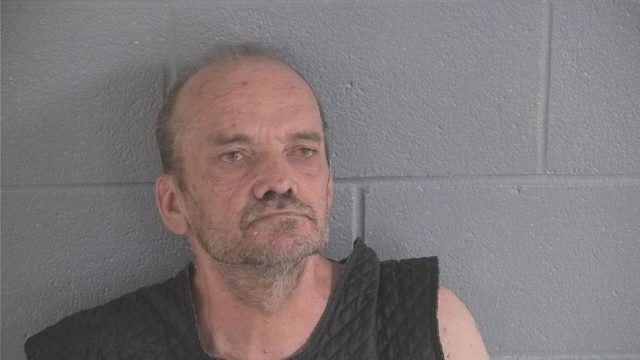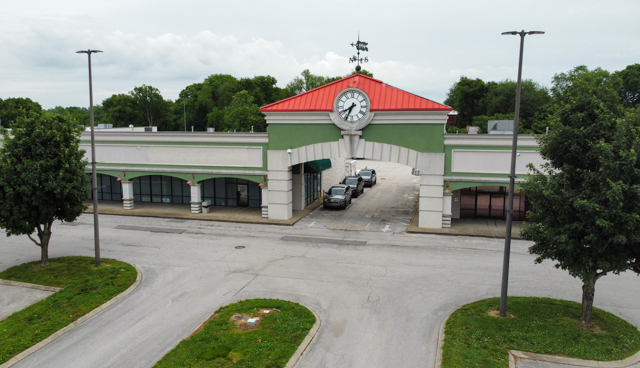Massive Logan County solar project draws criticism
Published 12:15 am Sunday, July 3, 2022
Construction on a 1,088-acre solar power site in Logan County may begin as early as September, according to a formal hearing Thursday hosted by the Kentucky Public Service Commission.
The planned solar project a few miles southwest of Russellville is a collaboration between Russellville Solar LLC, Silicon Ranch and the Tennessee Valley Authority. Silicon Ranch is leasing the acreage, Russellville Solar is constructing and operating the solar farm and TVA is running 145 megawatts of the solar energy produced to the Facebook Data Center in Gallatin, Tenn., and 28 megawatts to the General Motors Corvette Assembly Plant in Bowling Green.
The project has received ample local criticism. A public hearing in June saw more than 50 Logan County residents share their disapproval of the project.
One of the chief concerns was the potentially high cost of taking a significant chunk of grain acreage out of agricultural production for the duration of the project, about 40 years. This comes at an especially critical time when fellow top grain producer Ukraine is embroiled in a war.
For this reason, Adairville resident John Barnes encouraged the siting board to vote against moving the project forward. He specified that the capacity of the land to be taken out of production is “very high,” with an annual ability to produce more than 200 bushels of corn, 45 bushels of beans and 80 bushels of wheat.
“Food production should be at the top of our list as a land use for prime agricultural grain, not solar panels,” he said.
During the construction period, which is tentatively planned for September 2022 to December 2023, 400 to 450 employees will be hired to build the solar plant, according to the testimony of Dave Weise, Silicon Ranch operations project manager. However, after completion, the plant only requires five to seven permanent employees for maintenance, electrician work and the sheep herding that will occur on site to manage vegetation.
Barnes also expressed concern for the loss of agricultural jobs and the families who depend on current farmers for their food or employment.
“This type of project is only taking things away. It’s not adding any high-paying long-term jobs or anything else that would benefit the area,” Barnes said. “None of these entities (General Motors and Facebook) has anything to do with Logan County, Kentucky, so I hope you understand why this is so troubling to citizens.”
Two other members of the public, Kari Hall and Bridget Coots, also spoke at the formal hearing to question why Russellville was chosen as the location for the solar plant. Hall suggested that other lands that do not or cannot produce the same volume of cropland would be a better fit, especially since there is no guarantee that the soil will be as usable after decommissioning several generations from now.
Coots said the solar project should have never been in consideration, and that she believes Logan County was chosen because it lacks zoning ordinances that would adequately restrict land use for a project like this.
“I feel like this is a really high price to pay for that oversight,” Coots said. “Leave what’s already successful alone.”
The criteria for a prime location includes the ground’s slope, said Stefan Eckmann, Silicon Ranch senior manager and project developer.
“Once we have an indication of a high voltage line that can support a project like this, we would go out and search for flat properties sub-12% grade. In Kentucky, that’s a little bit more difficult,” Eckmann said. “There’s not as much flat areas, particularly in eastern Kentucky. That’s one of the reasons why you don’t see as much development in eastern Kentucky.”
TVA was looking for a nearby site to provide power to its industrial customers in the region, Eckmann said. TVA already had infrastructure in place, with power lines installed previously for now-shuttered coal units, and the project contributes to its goal of producing 10,000 megawatts of solar by 2035.
Another primary concern of local residents is whether the land will be capable of returning to productive farmland after the solar panels’ lifespan ends.
Michael Baute, Silicon Ranch vice president of regenerative energy and carbon removal, spoke about the corporation’s strategy for this at the hearing. He said the site will be in perennial forage production for the duration of the project, and the grass will be harvested by sheep on a daily rotation for soil health.
Sheep are used because they are less damaging to solar panels than other animals or machines, he said.
“Much of our projects are developed on agricultural land using sheep grazing as a way to manage our vegetation. It’s a unique and cost-effective way to keep land in agricultural production,” Baute testified.
“We anticipate raising that soil organic matter which will reduce runoff because we’ll hold more water in our soil. There will also be more soil carbon retained on the project. And ultimately at the end of the 40-year useful life, there’ll be more productive farmland,” he said.
The exact details of which grasses will be used are not finalized, but it will be a diverse vegetation, Baute added.
University of Louisville economics professor Paul Coomes, who conducted an economic analysis of the project, also testified at the hearing.
He said that while the amount of the lease payments made to the farm owners is confidential, it will likely mitigate any losses from farm income.
“The lease payments that the solar company will be making per acre for this land will presumably be much higher than the farmers could get from growing crops, or else they wouldn’t agree to the lease payments,” Coomes said. “So that tells me that there’s going to be a lot of new income in the county.”
The siting board discussed several other concerns, including the potential noise disruption of the project and the impact of heavy construction machinery on local roads. To watch the entire hearing, visit Kentucky Public Service Commission’s YouTube page.
After nearly four hours of testimony, the siting board adjourned the hearing. The siting board said that all it was waiting for before moving forward was the receipt of a few outstanding data requests.
As far as Barnes is concerned, it’s already a done deal. He said that local leaders have told him that opposition to the project is futile and that there is nothing citizens can do to stop it.






